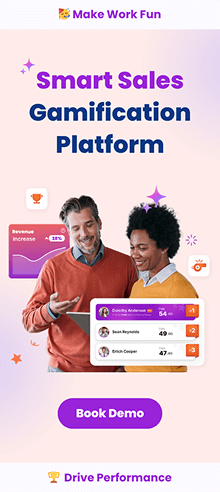Education has been transformed over recent decades with the invention of e-learning and online study. Since the advent of the internet, remote or hybrid learning possibilities have expanded hugely.
Here are some encouraging statistics on growth in online education since 2000:
· There has been a 900% increase globally in online learning uptake since 2000.
· CAGR of online learning is expected to be 9.37% between 2023 and 2027. The global market value is over $166 billion and is expected to rise to $238 billion by 2027.
· Open University Education is expected to generate revenue of over $103 billion.
· A recent survey of American high school students found that 67% had used mobile devices to complete at least part of their online coursework.
· Over 100 million students worldwide are enrolled in some form of an online course.
Online learning appears popular among students, teachers, and educational establishments in both the public and private sectors.
Growth has occurred across the following areas:
· Remote and home education for children.
· Adult further education online.
· Workplace training and upskilling.
· Online university degrees.
Besides the ready availability of WiFi, broadband, and inexpensive computer technology, what has helped drive this impressive growth? One main contributing factor is gamification, importing game mechanics and strategies into education to build student engagement and improve knowledge retention.
These developments were accelerated by the COVID-19 pandemic and the recent political push to address geographical and economic disparities in broadband access.
This article will examine how e-learning uses gamification to motivate learners and improve student engagement. First, we’ll examine why gamification is a useful technique for this purpose; then, we’ll run through some typical mechanics borrowed from gameplay.
Why does Gamification Education work?

Although game design elements are popular within educational settings with children, it’s not the case that only kids enjoy learning games. The techniques are just as effective within adult educational contexts in e-learning settings and online training programs. This is because they leverage a simple but powerful neurophysiological mechanism.
The pleasure accompanying any strenuous effort, whether physical or mental, is delivered by a dopamine neurotransmitter.
As one 2010 study summarizes, “Some dopamine neurons encode motivational value, supporting brain networks for seeking, evaluation, and value learning. Others encode motivational salience, supporting brain networks for orienting, cognition, and general motivation.”
The process, then, is subtler than simply rewarding good behavior. The neurons involved in dopamine release predict the pleasurable outcomes of certain behaviors and can learn behavioral patterns that lead to fulfilled learning objectives.
It’s a fascinating mechanism and complex when studied at the neurological level. However, all educators need to know is that reward strategies such as certification, leveling up, and awarding points and badges reinforce a pleasurable neurochemical sensation we crave.
Dopamine helps us pursue activities that might otherwise seem purely onerous (such as seeking or preparing food, exercising, or studying) because we associate these activities with eventual pleasure (feeling satiated, fit, or intellectually improved).
In learning settings, the dopamine mechanism is triggered by gamification reward strategies, which keep students in front of their screens, completing courses that might be demanding and complex.
Gamification versus Game-Based Learning
First, we must clarify a common confusion. Game-based learning and gamification are often mistaken for the same, but they are different strategies.
Game-Based learning places educational material within a game context. It generally includes a strong narrative and may even include an avatar for the learner and some sense of a mission to achieve. Educational content is fit around a game scaffold and must be cleverly and subtly integrated. Ideally, game-based education won’t feel like a learning experience at all.
Game-based learning is especially suited to children and young people. It works best with straightforward, uncomplicated subjects. Forget trying to use game design elements to convey the subtleties of quantum mechanics!
In contrast, gamification can reduce even complex subjects into bite-sized and quizzable components. Gamification brings game design elements into education without trying to convince the participant that they are playing a game. The distinction is one of distinction and priority.
As an article in Forbes explains: “Game-based projects are games first. Learning is connected to game mechanics. Gamification is the application of game elements in a non-game environment or activity. Gamified projects are learning courses first.”
In this article, we’ll discuss learning gamification in adult education settings and e-learning for children. It works just as well in both environments.
The Advantages of Using Gamification in a Learning Context
Here are just some of the reasons why educators and companies might adopt a gamification approach in their study and training programs:
· Students are appraised of their progress and achievements throughout their studies rather than merely at the point of completion and certification.
· Information is supplied in an interactive way which requires students to engage with the material rather than passively receive it actively.
· Performance and attention can be measured with a range of engagement metrics throughout the learning process rather than the secondhand information that offline learning necessitates (such as feedback forms and neutral observers).
· Students see a clear connection between effort and reward. They are encouraged to complete levels or modules to receive the kudos of colleagues or points/badges which mark the completion of finite tasks or elements.
· Students are free to complete certain courses in their own time, which means they can pause their learning when their focus drops and achieve better overall outcomes.
· Online learning is easier to arrange and provide access to, rather than the sometimes hit-and-miss nature of in-person workshops. It’s also easier to measure in terms of effectiveness.
For these and other reasons, online learning using gamified education apps proves highly effective.
Let’s turn to some of the most common game mechanics that have proven successful in an e-learning context.
19 Examples of Gamification in E-Learning and Online Education
You’ll recognize some of the following examples from traditional education since gamification has always been a part of the motivational mix, particularly in children’s schooling. Others will be less familiar since they rely upon the various game-playing mechanics available with modern technology.
1: Points and Grades
As well as the grades and scores accompanying many courses, it’s possible to award points during a course, contributing to an eventual score. Rather than wait for a final test or assessment, which means the student won’t know if they’ve passed until the last moment, points awarded during a course can help motivate them to keep going.
Depending on the course’s purpose, it may be possible to allow learners to retrace their steps and redo quizzes and challenges to obtain a higher score. If the explicit purpose of the learning environment is to instill knowledge, then there’s no good reason not to allow this.
Studies have found that the voluntary retaking of quizzes and tests is a reliable predictor of an improvement in cumulative assessment. These students tend to improve overall, suggesting that this should be encouraged. In this way, even a low initial point score can lead to good learning outcomes.
Think about credit scoring via agencies like Experian. This is a kind of points-based gamification used by lenders to assess the risk of borrowers and by borrowers to motivate good financial behavior. The same principle is at play. Let people know their scores, but allow them to improve them.
2: Certification
Another of the oldest gamification strategies is to award certificates of achievement at the end of a course. From the degree certificates and qualifications that graduates display in their offices to professional training certifications which are purely digital, these markers of final achievement remain popular.
Companies like Salesforce offer training courses on aspects of their platform and sales in general, which can be added to resumes or attached to professional profiles. In both cases, the student has an attractive, permanent record of their achievement, which they can use as proof of course completion.
3: Leveling Up
Most popular video games have levels, and players love trying to reach ever-higher achievement plateaus. Similarly, in both a professional and educational context, courses can be designed to have levels of attainment.
This strategy leverages students’ natural ambition. Why would a student be content to stop at Level II if there’s a Level III course? Music classes have long understood this principle with piano teaching, assessed from “practical initial grade,” then from grade one to seven.
Leveling up piques a student’s eagerness to attain mastery in a subject. It works especially well for practical skills which can be demonstrated physically. However, it also works for professional skill-building and complex theoretical subjects like math. Everything from coding to karate can be graded in this manner.
4: Ramped Challenges
Allied to leveling up is the design of a gamified education platform itself. It doesn’t make sense to front-load the complex learning since this can often dissuade students from struggling with the topic. Instead, a well-designed course takes lessons from video game design.
Video games begin with relatively simple levels, so players can get used to the rules and challenges they will face throughout their gameplay. After initially easy levels, the game dynamics gradually get harder, requiring greater concentration and encouraging skills development.
Similarly, foundational matters are covered first in a learning situation, with the course progressing to more complex matters later. To ensure that information is retained, quizzes and miniature games can be used at the end of course modules to ensure that the student isn’t being left behind.
5: Badges
From eagle scouts to sales professionals, everyone loves a badge or visual marker of success. Educators can use badges to mark stages on the journey toward eventual graduation or certification. Using online learning platforms, badges can be automated and collected by recipients.
As H. E. Parker puts it in a 2015 paper, “Digital badges are electronic symbols used as micro-credentials to document achievement or skills mastered such as course completion, professional development participation, or training completion.”
There is some overlap with certification, but in children’s education, badges can be used to supplement an eventual grade or pass mark. The latter is often of more interest to parents than children. Badges, however, are markers that elementary school students can use to promote competition within their own peer groups.
6: Kudos and Congratulations
The social aspect of e-learning is one of the most challenging elements for software developers to build. They cannot expect to recreate the real-time, in-person experience of a classroom. What is possible, however, is to allow students to share notifications with one another when they obtain a badge, grade, or qualification.
This, in turn, permits fellow students to congratulate one another in several fun ways, whether it’s SMS messages, emojis, sounds, GIFs, or other sharable celebrations. Context, of course, is everything, and some subjects don’t suit this approach.
Peer encouragement is the positive flipside of peer pressure, and a well-designed social networking tool can motivate high-performing students to encourage those who need more support. It’s important to monitor the use of social channels, and during mandatory exams, such platforms will not be available to prevent cheating.
However, for everyday studies and mid-course quizzes, it’s useful to leverage social support networks in the service of knowledge retention and team performance.
7: Team Scoring
Speaking of teams, another of the oldest examples of gamifying education is the “houses” that many schools use to promote team competitiveness. The Harry Potter novels of J. K. Rowling capture this concept well, with the characters competing in four houses with names like Gryffindor and Slytherin.
Similarly, in a professional context, sales teams are often encouraged to compete with one another. Teams provide the opportunity to balance individual ambition with the mutual encouragement that comes from group work.
Sports have always understood the benefit of teamwork, even in sports that are not explicitly team activities, such as track and field. In Olympic athletics, countries build teams of differently-skilled athletes whose performance contributes to their country’s overall score.
Similarly, in an educational setting, it’s possible to set up teams who will develop a friendly rivalry and mutual in-group support.
It’s important to ensure that teams are balanced, especially when using e-learning, since the physical interaction of team members is necessarily limited. If one team continually dominates, this can have a negative effect, so monitoring performance over time is vital and ensuring that every team or house has a chance at leading in any given period.
This can be done by balancing teams so that each one has the same proportion of high achievers and less well-performing students. It’s not a good idea, for instance, to let students choose their own teams. Promoting the notion that team allocation is fair and equitable is generally better.
8: Gamified Information Reveals
If online courses are just text and static images or graphics, then they are no better than PowerPoint presentations. Instead, there must be interactivity in online courses, even in providing key information.
Fortunately, many gamified education platforms allow for concepts like mouseovers, where key information is revealed when a user’s cursor is moved into position, or questions that invite the user to guess at an answer before revealing the surprising truth.
These are just two examples of ways to reveal information that require active input from the learner. Clearly, this means that students must be alert and focused and cannot simply skip sections to get to the next part of the course.
9: Enhanced Narrative
Such methods use surprise and gradual revelation to strengthen the narrative of a course. Narrative can be an overlooked aspect of education, and it can prove a highly powerful tool. As an article in E-Learning Industry puts it, “The narrative draws the learner into the simulated problem and resolution provides them with the rich learning experience.”
The construction of the text to tell a compelling story should not be overlooked. Whether it’s explaining how Louis Pasteur discovered Penicillin or exploring the history of slavery in the US, the structure of a course should mirror the telling of a compelling story.
Rather than a dry, chronological listing of facts, narrative courses engage the emotional and empathic interests of each student. Care must be taken not to drive a slanted political narrative, but making any topic compelling through the narrative structure should be possible.
Even popular computer games use narrative; video game features such as scripted scenes add a narrative context to even the most mindless first-person shooter.
10: Puzzles and Quizzes
Modern online courses tend to be modular in structure, and it’s common practice to include a quiz at the end of each section, which must be completed to a minimum standard before the student can progress. Sometimes there’s a mid-module quiz for which the pass mark is less vital.
These quizzes and puzzles serve multiple functions. Firstly, they provide proof to both the student and the educator that that information is being retained. Secondly, they add a bit of fun to the process of progressing through a course.
As well as multiple choice questions, learning platforms usually allow for a range of quiz or puzzle formats. These might include questions where the student fills in the blanks or moves blocks of text or images into position, matching questions with answers.
More elaborate examples would include graphics where the participant is invited to circle or highlight features or short video clips where the viewer is asked to find the answers to questions posed.
An additional feature of such quizzes is the extraction of progress and performance metrics, which let the course designer know how well students are doing in the aggregate. If a quiz generates poor results, then it may be necessary to revise the course content. Measurement of the average learner’s time to complete a module can be useful too.
11: Video Content
There’s a hierarchy of online content regarding how engaging it proves to consumers. Plain text is at the bottom of the pile, with video content and animations at the top. Moving images break up text blocks and inject personality into a course.
Platforms exist now to add interactive elements to video content, such as multiple-choice clips with variable outcomes, depending upon which option a student chooses. This can be a great way to demonstrate the effects of good or bad customer service, for instance.
Video clips should be short, pithy, and engaging, with believable performances where actors are used. They can be especially effective when illustrating a complex situation that requires a learner to engage their empathy.
12: Dashboards and Personal Metrics
The balance of power in terms of monitoring achievement levels can be shifted away from the educational establishment or company by giving learners their own personalized dashboards. This can be particularly effective for onboarding situations where an employee has a lot of training to complete quickly.
Learners can monitor their own achievements, see how many courses or modules they have to complete, and get an overview of how well they are doing. They have somewhere to collect their accolades and share certifications when they need to. Where mandatory training courses need renewal, individual learners can be given forewarning and can check on expiry dates.
Such dashboards can also collate congratulatory messages from fellow team members, colleagues, or students. They can often be customized to fit individual users’ priorities.
13: Progress Bars
A great way to mitigate course abandonment is to display progress bars during an online session. For instance, learners might notice that they have completed 56% of the course and therefore are more than halfway towards finishing it.
Visually, these techniques resemble the power or health indicators you may get in a video game, which players are encouraged to maximize, so they may even have a subtle subliminal effect on regular gamers.
14: Feedback in the Moment
Historically, students of any course not using continual assessment would have to wait until a professional or educational body issued exam results or pass marks. Before their results were issued, they would have little or no idea how well they were performing. This is far from ideal for both the student and the educational body.
Gamified learning allows for real-time feedback on progress, which can encourage students or at least provide an early warning that revision or further study may be required. Feedback can be supplied in the form of end-of-module quiz results, periodic assessments, or simply social kudos provided by fellow students.
An article on the Getting Smart site adds a further benefit: “The process of sharing feedback throughout learning not only positively impacts learning outcomes but also highlights essential skills of self-regulation.”
This is particularly true for children, where it’s important to promote the values of focus, diligence, and self-improvement. Without in-the-moment feedback, this process becomes difficult to reinforce since you don’t have performance evidence at hand while there is still time to make changes.
Use any form of continuous assessment, and it becomes easier to prove the effectiveness of study, revision, and concentration.
15: Simulation Scenarios
Sometimes an aspect of study requires some sort of practical exercise, but there isn’t the opportunity to hold in-person class discussions. This is where simulations come in.
These are explicitly game-like in that they mimic real-world scenarios and use images, video, or animation with interactivity to allow learners to simulate what they would do in a similar real-world situation. Simulations don’t need to be photo-realistic or contain every variable a participant might experience, but they do need to cover the main facets of the scenario they’re mimicking.
Consider, for example, the flight simulators that pilots often train on before they are cleared to fly new aircraft. Since many of the processes of modern flight are automated, it’s important to challenge pilots to deal with unpredictable events (such as fog rolling in, pressure drops, fuel shortages, or other eventualities).
Such simulators allow quite dangerous scenarios to be tested in a safe environment. They’re also great fun, as evidenced by how popular flight simulators prove when made accessible to non-pilots.
16: Pause Mode
A subtle feature of online learning that’s often overlooked is the ability to pause the experience and return to it later. This cannot be done in classroom learning. Students can be given a completion deadline yet have huge leeway regarding when they undertake their courses.
This allows learners to maintain focus, which is important when studies have shown how limited human concentration is. It’s also an idea directly imported from games, which users can usually pause to return to later. It’s no longer the case that attention-breaking distractions need to damage performance. They may even improve it.
17: Modular Learning
Another important yet subtle aspect of online learning, which almost all such courses share, is that they are typically broken into modules. This strategy makes what could seem an onerous task feel more manageable.
Modular learning takes advantage of a self-evident psychological truth – large tasks seem less daunting when broken into finite pieces. Marathon runners are often encouraged to think no further ahead than the next mile or kilometer marker for the same reason.
Continue to adopt the strategy of focusing only on the task at hand, and a student may complete the course sooner than they would otherwise.
18: Social Channels
Linked to the notion of kudos and celebration are the channels for social interaction that exist in some e-learning platforms. In this way, fellow students can comment on the difficulty of a course, recommend courses, offer congratulations, and share revision aids.
Sometimes such forums are moderated to avoid any suggestion of cheating. In other applications, final quizzes or exams present a random subset of questions to each student so that no two users will receive the same ones. This limits the value of sharing your answers with fellow students.
There are several open learning platforms, such as Skillshare, where individuals can create and offer their own courses and interact to encourage participants. This type of knowledge-sharing is one of the biggest growing sectors of online education.
19: Rewards and Incentives
Lastly, some training can be further motivated with gifts and rewards which have more than a symbolic value. This is particularly helpful in workplace settings. Tokens can be offered that can later be exchanged for goods and services (or even additional annual leave days).
However, there’s no reason why teachers can’t offer some sort of token incentive for improved student learning. In K-12 classes, gold stars and their equivalents have always been a part of classroom motivation. It’s quite easy to translate this method into automated systems on an online platform.
Crypto trading platform Coinbase offers cash value for users undertaking online short training courses on specific, and often new, cryptocurrencies. Upon completion of a short module, including a final quiz, subscribers are awarded a few dollars for spending on the platform.
The same strategy could be offered via an e-learning portal across a range of topics and use cases. It depends on whether an educator believes that monetary reward, or its equivalent, fits with the organization’s cultural values.
Tips for Implementing Gamified Education
Before including gamification elements in your educational environment, it’s vital to ask a series of questions, the answers to which will shape course specifics.
Here are the main questions you need to ask:
· Who is studying; what are their priorities and learning objectives? Are they very competitive? Are they generally well-motivated and high performing, or are they study-avoidant? What age are your students, and how much knowledge do they have of gameplay and gamification? While many people are familiar with gamification in contexts such as lifestyle apps and platforms, they may not expect it in an educational setting.
· How intricate is your subject? Does your course suit gamification at all? It’s not a strategy for every topic. If your course is too fact-driven and book-based, you may only want to employ a few gamification elements, such as progress bars and level-based grading.
· Is teamwork vital to the topic? For team-based subjects, E-learning through gamification might not work especially well. That said, there are platforms for collaborative online study. E-Learning Industry has a useful list of suitable platforms.
· Are monitoring and metrics essential? You may need to find a platform that lets you monitor employee progress closely. Sometimes, you may need leaderboards that you won’t find on most educational platforms.
· How much gamification is appropriate? You’ll want to avoid patronizing your audience. 25-year-old interns used to gameplay will expect a different experience from senior executives who aren’t used to gamification at all. That said, almost all courses benefit by using video, images, and interactivity rather than reams of text.
· What is your ideal completion time? Don’t fall in love with gamification to the extent that your course becomes a sprawling epic taking a week to finish. It’s worth running trials of your work in progress to ensure that the average user finishes it in a reasonable time.
Answer all these questions and you’ll be able to create fit-for-purpose, engaging, and enjoyable gamified educational software that’s right for your students.
Why Might You Import Gamification into Your Courses?
Here’s a final reminder of some of the educational benefits of using gamification in your online learning program:
· Students have greater ownership over their education and more responsibility for it.
· Failure is no longer seen as a disaster; learners can retake quizzes or exams.
· This learning mode is often more fun, both onscreen and in class.
· Progress indicators show students and educators alike how students are performing.
· Learning can be motivated by more than just the intrinsic value of education.
· Simulations and video content can allow students access to experiences they would not otherwise have.
· Younger students are used to the gameplay and find these interventions comfortable and familiar. They are willing to risk being wrong or temporarily failing.
· Engagement and concentration are both maximized in gamified educational apps.
· Course designers can use more imaginative approaches to learning, which may keep them more engaged too.
Gamification and education are comfortable bedfellows, making the most of the medium of online learning. The days of dry text-based courses are over, and the move toward online learning needn’t mean we abandon social interaction or classroom sessions. Many of the best e-learning programs also include an in-person aspect for student motivation, including mentoring and group workshops.
Gamification doesn’t replace group learning in a classroom environment; it augments it. However, applying game mechanics to reinforce learning outcomes is an increasingly omnipresent strategy for one primary reason.It works.
We’ve created a platform that supplies gamification tools for both workplace and educational settings. For more on how Spinify can help you gamify your educational process by tracking leanings and course completion in a super fun way! Check out our product, or book an online demo today.



